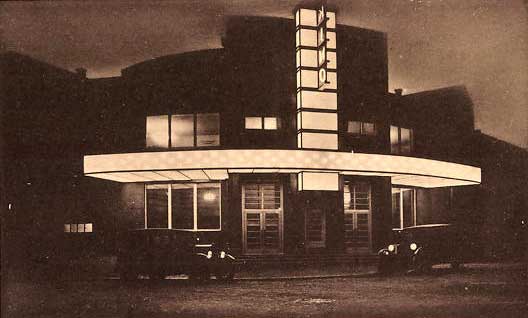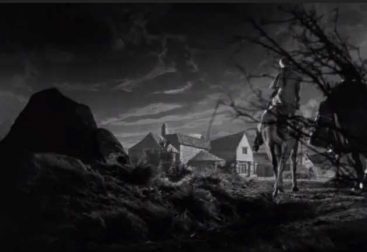The following text is a comment, a response to a contribution by Lars Henrik Gass, which was published on filmdienst.de on October 22, 2020. Ursprünglich war beabsichtigt, diesen Text dort als Kommentar einzufügen. That was not possible because the text is obviously too long. Therefore the text is published here.
Based on the current problems and the impending end for the film club 813 in Cologne, Lars Henrik Gass deals with the “unbearable stepchild role of film culture in Germany”.
Here, too, it is worth taking a closer look at the title itself: The 813 film club is not mentioned in the title at all. When reading Gass’ contribution, the reader should ask himself what is the focus of the contribution. And then the stepchild imagery: please, whose stepchild should film culture be? And does this imagery really make sense?
Frankly, I was more concerned with the fate of the 813 film club than with finding an answer to the question of what is behind the imagery. The text on the contribution by Lars Henrik Gass:
In contrast to the French, the German bourgeoisie almost never loved film and cinema. Whereas in France the period of early cinema is seen as the one in which France was the “Queen of Cinema”, the country where the Lumière brothers first screened films in Paris and soon gave the country a cultural and economic leadership position which France is still proud of today, nothing comparable can be said of Germany.
Only for a short time during the Weimar Republic, when the directors Fritz Lang, Friedrich Wilhelm Murnau and Ernst Lubitsch created films of world renown, which have since been part of the world cultural heritage, such as B. “Metropolis” by Fritz Lang, the German bourgeoisie indulged in a certain inclination towards film culture, because in the glamor that the films of the named directors exuded, one liked to sunbathe and did not want to stand disgracefully aside when there was such a glamor and Let fame also be directed to the German bourgeoisie.
But then Lubitsch went first, then Murnau and finally after the so-called “seizure of power” by the National Socialists also Fritz Lang, but by no means head over heels and overnight, as Fritz Lang himself rumored, but rather planned, taking his fortune with him, something was only possible in violation of the foreign exchange laws of the National Socialists.
The German film degenerated into the propaganda object of the fascists, and after the end of barbarism a cinema emerged in the fifties that made a very significant contribution to the restoration of the post-war period with the so-called “Heimatfilme” and other depreciation products.
The departure took place in the late sixties and early seventies with the directors Rainer Werner Fassbinder, Wim Wenders and Werner Herzog. The level of the twenties could not be reached by citizen fright RWF, or Wenders, who was in love with America, and also not Werner Herzog. When I ask foreign friends and acquaintances for their opinion on German cinema today, I am viewed with doubt or smiled at pityingly, and as a rule, a term such as “mediocrity” comes up at some point.
The German bourgeoisie loves its opera, its concert hall (just think of what the Hamburg bourgeoisie was prepared to spend on the Elbphilharmonie) and its art museum, but cinema and film? While the performance of operas dating back to the Baroque era is something that is taken for granted, one is vilified as a nostalgic if one devotes oneself to the time in which films had to tell their story through images (Kracauer) and therefore films with a unique visual power originated, today’s films are often missing.
In my opinion, we have to come to terms with the fact that the German bourgeoisie do not love film and cinema (and if I may allow myself the remark: the worst are the literary educated citizens who expose everything to do with images to the general suspicion that these creations cannot be trusted). We have to make it clear to the German bourgeoisie that there is indeed film culture, even if it does not want to admit it. And that this film and cinema culture as such has its own value and should be appropriately promoted.
The only question is how to start. It is above all a question of cultural policy. It is the question of how adequate funding of an institution has to be measured in order to be able to carry out film-cultural work. After all, this means that year in and year out a film program has to be created that can meet cultural demands. In other words, a selection of films based on topics, people and other categories that creates an aesthetic added value that goes beyond the entirety of the individual films. This is shown in detail on the sinn-und-cinema.de website in an article entitled “The Art of Programming”.
In any case, and Cologne city council members please watch out now: the ridiculous sum of 15,000 euros annually is not enough for this. THIS SUM MUST IMMEDIATELY TENFOLD, SO INCREASE TO 150,000 EUR. You can easily do this, dear Cologne city council members, through a supplementary budget. Film culture and the 813 film club must be worth just as much to the city of Cologne as the art association.
The current grant leaves some people in precarious conditions, too much to die and too little to live on. And as puny as he is, he is a disgrace for the city of Cologne. With this miserable sum you damage the reputation of the city of Cologne as the largest city and as a cultural metropolis of North Rhine-Westphalia.
The proposed sum of 150,000 euros will not turn the 813 Film Club into a cinematheque, as Lars Henrik Gass calls for in his contribution for all major German cities. The essay by Lars Henrik Gass undoubtedly describes precisely and correctly the current situation of the 813 film club and the entire film-cultural situation in Cologne, but on closer inspection the demands that Lars Henrik Gass finally makes have almost nothing to do with the situation of the Filmclub 813.
Let’s take a closer look at what the requirement for cinematheques libraries means. A cinematheque is an institution that not only collects film copies, but also maintains and restores them. Furthermore, in contrast to a pure film archive, a cinematheque also collects everything that belongs to the “cinema system”, from props, costumes and other objects of film production to objects of distribution (i.e. posters, photos, brochures, etc.) to the testimonials from the reception. This includes, for example, film criticism and also the academic examination of film and cinema. Every good cinematheque therefore also has a library that is accessible to the public.
How many institutions that fulfill the tasks described does Germany need? It would currently be a step forward if the existing cinematheques, film archives and film museums in Berlin, Potsdam, Frankfurt and Munich were adequately equipped. This is not the case with all institutions. We don’t need more cinematheques that require very large sums of money because of the tasks described, what we need are non-commercial cinemas that can be adequately equipped with much smaller amounts than is necessary for cinematheques. What the film club 813 needs is devoured by the digital restoration of a few films in a cinematheque. However, the non-commercial cinemas should be well equipped so that they can follow innovative developments and even drive them forward. And finally, I also advocate that non-commercial cinemas should not call themselves cinematheques, as is the case sometimes if they may have a small collection of prints but can never fulfill the extensive tasks of a cinematheque.
Let us turn to the question of the form of organization. In my opinion, municipal sponsorship does not bring any advantages. Lars Henrik Gass basically denies the structure of association the ability to “save cultural practice” Does he really think that a civil servant or employee apparatus could handle this better? I would like to allow myself to point out that the most popular organizational form of the multi-million dollar German football clubsis precisely this form. In addition, there are private-sector structures in football, including stock corporations. For non-commercial cinemas, in my opinion, the non-profit Ltd. is more suitable as an organizational form, as it offers considerable tax advantages and, on the other hand, can exclude certain problems of the association. This is for example the dependence on uncontrollably changing memberships and majorities in the general meeting.
The demand for institutions in municipal ownership also overlooks the historical experience from the time when municipal cinemas were started. Quite a few municipalities simply shied away from imposing an obligation on themselves with a municipal cinema, which they would have been difficult to control and possibly hardly have been able to stop again if the desire had arisen. An institution that was independent of the municipality, but supported, appeared to many municipalities to be the more suitable way. It’s hardly any different to this day. That is why Lars Henrik Gass’ request seems to me to be simply an illusion.
Strictly speaking, Lars Henrik Gass’ illusory demands are of little use to non-commercial cinemas; yes, it is to be feared that his overshooting the target could damage the municipal cinemas, since the cultural politicians could completely refrain from the desire for appropriate subsidy increases in view of these demands.
Back to the 813 film club: for the 813 film club, Lars Henrik Gass’s demands are far from reality. A film club that receives a grant of just 15,000 euros annually in 2018 (the current figures should be a little higher) has completely different problems. And so the fatal impression arises that Lars Henrik Gass has only used the current problems surrounding the 813 film club to be able to present his unrealistic ideas of the cinema of the future once again.
Photo above: Cinema in Neu-Titschein on a historical postcard (today: Nový Jičín in the Czech Republic; what the cinema looks like today can be found on the website kinonovyjicin.cz).






